It was one of those days. I had so many projects at home that needed attention. However, Tuesday was the one day this week I didn’t have an appointment of some kind. I wanted to get out of the house and do some photography and exploration. However, I had run out of ideas. Was there some place new in the Upstate I could explore? Some place I hadn’t already visited and photographed many times? I kind of left things to chance, and I’m glad I did. I was literally pulled into some new explorations of Union County.
Seriously, I was completely out of ideas. I pulled out all of my resources, both in books and online, and just couldn’t come up with a plan. There were no hidden railroads that caught my attention, I’d visited most of the old schools – I had explorer’s block. So, Tuesday morning I set out without a clue where I was going. I had no waypoints loaded into my GPS. I even stupidly left my paper maps at home.
I didn’t get as early a start as I wanted, so I still got tangled up in the local school traffic. Once through that I found myself zig-zagging eastward, down Wade Hampton, through Greer, then southward on Highway 101. I was enjoying the countryside, but not taking any photos. A plan began to take shape, though.
I made it through Woodruff, then out into the southern Spartanburg countryside. There I pulled over and plugged in a city into my GPS – Lancaster. I hadn’t visited there since the mid-1990s. I’m sure I’d find interesting things to see. My hope was that by starting the route in the middle of nowhere, I wouldn’t be routed onto the Interstates, but through rural routes. As I watched my GPS calculate, that strategy seemed to be working.
A few more zig-zags and soon I was entering the community of Buffalo. It had been a long time since I’d photographed the old mill, and now only the two towers remained.
There were folks working on the grounds, so I didn’t linger. I continued on the road past the mill and found myself in the heart of downtown Buffalo. I didn’t recognized it. To my knowledge, I’d never been here. Usually I stay on 215 and bypass this area. So, there were new places to explore, after all. There were two old commercial buildings and a cafe that were just begging to be photographed.
I loved the arched windowss on this one building. It looked like this might be a large open space perfect for a ballroom or event venue. Sadly, it also looked like the space was open to the elements with broken panes. Pigeons were flying through the open windows, and I’m sure it was a mess inside.
As I was taking photos a woman came out of the other building and asked, “Just what do you think you’re doing?” I was getting ready for a confrontation and preparing my Photographer’s-Rights-First-Amendment spiel when she broke into a confused smile. She invited me in to see what was happening at the Senior Center in the building she had just left. I found out later that she had confused me for one of the Senior Center members and was wondering why I was out taking photos, and not taking part with the group. I guess I’m looking more and more like a senior citizen.
Despite the initial confusion, Betty Medford turned out to be a wonderful host, though. I introduced myself to the group, and explained what I was doing. Betty had invited me in because they had some old photos on display that showed the buildings at their prime. The building with the arched windows was the old Buffalo Mill Company Store, and the building we were in had been an old drug store. Sadly, there weren’t any dates on the photos, but the calendar on the interior shot reads “1934.” This building had been renamed the “Vanderford Building” in 2010 after a longtime community supporter.
Mrs. Medford and Dennis Crisp were kind enough to give me a tour of the building. The seniors occupy the lower part of the building. They have a food pantry in one front room where the photos were on display, and activities in another. Tuesday is bingo day, so they had that set up, as well as a couple of jigsaw puzzles. I took a photo of some of the architectural details of the interior.
Upstairs was just one large room, and it was set up for meetings. A banner for the local American Legion group hung behind a podium and flags. Tables and chairs were also set up.
The hardwood floors had been recently refinished, and were stunning. The room was trimmed with the shade of forest green that I recognized from so many old schools and public buildings. I don’t know what it is about that shade of green that made it so popular, but it always brings back memories of old buildings. Running along the edge of the room was a raised area where they had placed several benches. It looked for a great space for a dance or for a shape-note singing.
There was one set of odd doors that were set above the floor. A makeshift set of steps led up to one. Dennis was curious, so he opened the door, and we found modern HVAC equipment. Hard to tell what the original purpose might have been.
The large windows let in lots of light, and provided views of the community.
While in the upper room Betty Medford told me a couple of spooky stories. As we looked out onto Leonard’s Cafe she said that a couple of years ago Leonard was out cutting grass and dropped dead of a heart attack. She was the one who found him quite awhile after he died, and it really shook her. Betty is also convinced that the Vanderford Building was haunted. While there by herself she had heard footsteps upstairs, and she said that she had seen shadowy figures out of the corner of her eye.
Back downstairs more of the senior group had gathered. In addition to Betty and Dennis we were joined by Patti Gault, the site director, Peggy Johnson, Dixie Fisher, and Judy Cannon. They posed for a photo.
Dixie is Betty’s daughter, and she is also interested in photography. She showed me a couple of places outside she’s used for photoshoots. She also showed me a brick on the side of the building where her father had carved his initials in 1954.
I thanked my hosts and passed out lots of my photo cards. I took a few more shots of the buildings, including one of the now-closed Leonard’s Cafe. Apparently it never reopened after Leonard’s death.
I wish I had been able to get into the old company store. It’s currently owned by a sign company and used for storage. The sign company owner’s wife has plans to open part of it as a variety shop. There were signs throughout the community with “coming soon.” Maybe at that point I’ll get to visit, but from all appearances of the building it didn’t look like that would happen anytime soon.
I left downtown Buffalo and drove through the little mill village. One of my colleagues’ husband had been pastor of the Methodist Church in town. Somehow, I missed driving by it. I did head back to the mill, though. The workers were still there, but I decided to take photos anyway. I started with the old mill office building, recently restored, and now serving a a community center.
Next to and running in front of the center were the tell-tale signs of an old railroad, most likely a spur line that served the mill.
The towers themselves were depressing. The architecture was amazing, with clock faces gracing all sides of the south tower. The faces are now cracked, and I don’t know if any of it can be salvaged.
This photo is from a 2007 visit. It shows the clock face intact, and the tower in pretty good shape. The tower appears to be attached to something so that it almost looks like the mill itself is still standing.
I remember taking other photos of the mill when it was standing, but those must have been in pre-digital days. I couldn’t find them on Flickr.
By this time I knew I wasn’t going to make it all the way to Lancaster. I turned off navigation so that the GPS lady wouldn’t keep annoying me. The day was still fairly early, and I still had much to see and do.
Before I leave Buffalo, though, I wanted to learn more about the town. Here’s a bit of what I was able to find, post-visit…
In the late 1800s and early 1900s a young architect/engineer from Charleston named William Burroughs Smith Whaley designed and built a series of textile mills in South Carolina using the Romanesque Revival style. A report for the National Register of Historical Places on the Olympia Mills(PDF) has this partial biography of W. B. Smith Whaley:
Across the South, cotton mills were constructed at explosive rates. Fourteen mills stood in South Carolina in 1880, even fewer than in 1860. But between 1895 and 1907, sixty-one new textile mills were built and older ones were expanded and updated. By 1910, there were 167 cotton mills in South Carolina, a number second only to Massachusetts.15 A key group of South Carolina mill developers were responsible for much of this boom. These barons included Leroy Springs, John T. Woodside, and Lewis W. Parker whose company eventually operated more than one million spindles in South Carolina. Charleston native W.B. Smith Whaley, however, was South Carolina’s main proponent of textile production and innovator in mill design.
William Burroughs Smith Whaley (1866-1929), like many of his New South counterparts, received much of his education in the North, attending Stevens Institute of Technology and Cornell University, from which he graduated in 1888. After working as a mechanical engineer in Rhode Island and being exposed to textile mill design and operation, Whaley returned to South Carolina in 1893, establishing himself in Columbia as a mechanical engineer specializing in mill design. The following year, Whaley and Gadsden E. Shand, a Columbia civil engineer, founded W.B. Smith Whaley and Company. Between 1895 and 1907, the firm designed twenty-one mills in South Carolina, Georgia, Alabama, and North Carolina, most of them in South Carolina. One of his largest mills was the sixty thousand-spindle F.W. Poe Manufacturing Company in Greenville with over nine hundred employees. Through the firm’s work, Whaley and Company introduced many architectural and technological innovations to mill design in South Carolina.
More can be read about Whaley in “Textile Mills in South Carolina by W. B. Smith Whaley“, another report from the National Register specifically on his textile mills. (PDF)
In addition to Buffalo, Whaley built or modified Union Mills, Inman Mills, Granby Mills, Newry Mills, and many others. Whaley also designed and built Olympia Mills in Columbia, right next to Granby Mills. In 1901, at the time of its construction, Olympia was the largest textile mill in the world under one roof. On September 25th local newspapers such as The Manning Times proclaimed the achievement.
The Buffalo Mill was also built in 1901, and was modeled on the Olympia design. While the internal layout differed, its towers were almost identical to those at Olympia in Columbia. Here are photos of Olympia Mill that I took in March of 2007:
Olympia has been converted to loft apartments, but it is on the National Register of Historic Places.
Interestingly, if I had continued on to Lancaster, I could have visited the site of another Whaley mill built on the same plan. Lancaster Mill, Later Springs Mills, had similar, but not quite identical towers. Fellow photographer and friend Joe Hinson took this photo. It’s dated 2002, but it’s from a scanned image. The mill was torn down before this photo was posted.
Buffalo, sadly, wasn’t as lucky as Olympia, and suffered the same fate as Lancaster. The mill closed in 1994, and was eventually torn down. I was able to find a couple of images of the mill while it was still in operation. This undated image is from the Library of Congress. Based on the model of cars in the photo, I’d guess it was taken just prior to the plant’s closure in the early 1990s.
The LOC has several other collections of images from Buffalo Mill, including the mill itself, the power plant, the mill office, and several houses.
Even though it is no longer extant, the mill and surrounding village are included on the National Register of Historic Places. There are several more photos on that site, as well as a link to the PDF nomination form with even more details.
I was able to find out a bit more about the commercial buildings I’d visited, and about the town. At one time there had been a rather elaborate hotel and lodging house. I was able to find this photo at the county museum:
The Mutual Dry Goods Store operated as an extension of the textile company. Workers were paid in scrip tokens, which could then be exchanged for goods.
According to information I found on the Spartanburg County Library website, the company store had “three floors and carried dry goods on ground level, groceries in basement and furniture and coffins on top floor.”
As for the other building, only part of it was a drug store. The other half served as a bank. I didn’t find out anything else about it, but I did find a May 1916 newspaper article describing a murder in the drug store.
Perhaps Betty Medford’s imagination wasn’t playing tricks on her, after all.
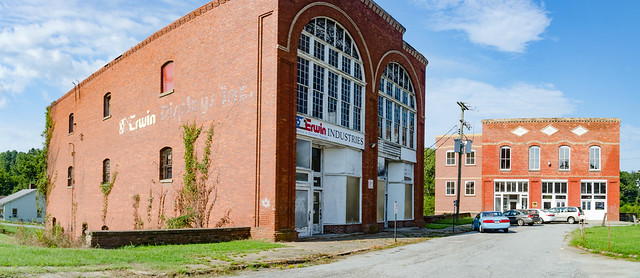

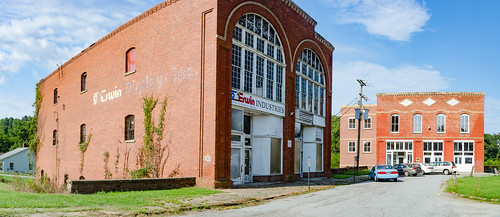



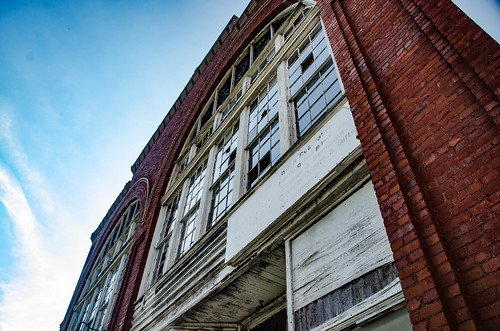





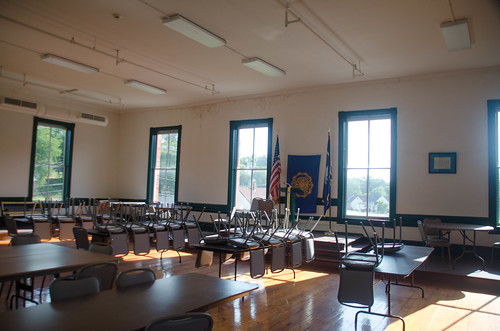




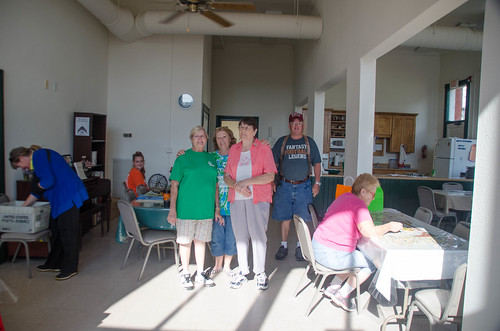
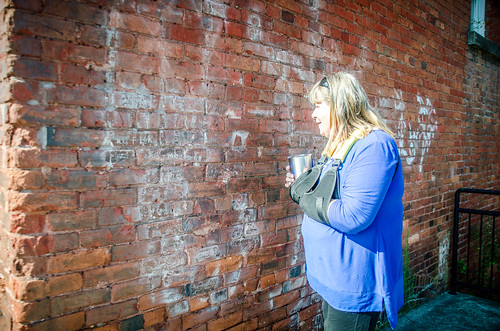



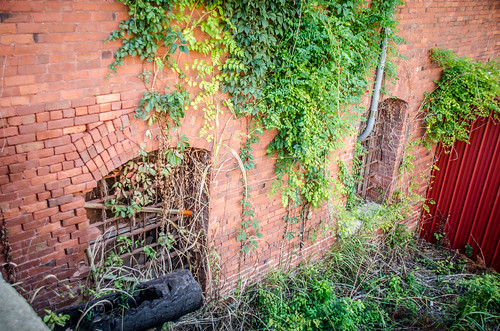

















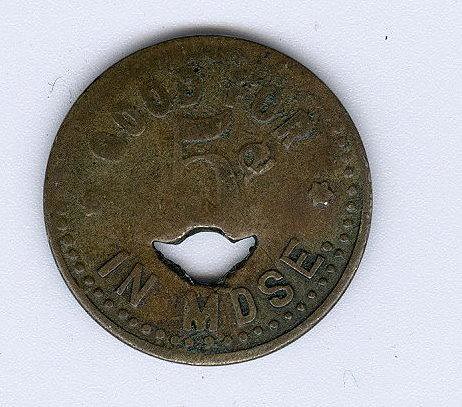


“Pulled into Union.” A little like the adult version of being pulled into Narnia. So, is Buffalo the “Arkanland” of Union?
Cool story. And neat that it happened in the way it did. Love the architecture of the towers.
Sooooooooo…. Driving to meet for dinner at Andy’s (A MUST VISIT) from Spartanburg and BOOOM out of the beautiful countryside erupted these beautiful towers!!!! I was breathless! I am not from the area so had taken a turn unfamiliar because my phone had died and was trying to follow the route told to me earlier in conversation from memory . I loved everything about this and couldn’t even focus on dinner conversation out of excitement to return with my daughters camera ASAP first chance! Not sure what future plans are for this beautiful site, but this little community should corner the market on their rare and unique beauty and show off this gem of a town :). Absolutely gorgeous! Also, Andy’s has the best open faced Roast Beef sandwich, I swear! The restaurant is just past these towers heading into Union on the left. What an unexpected wonderful drive! Can’t wait to return to explore and photograph!